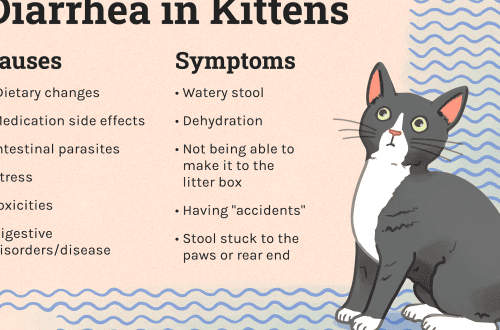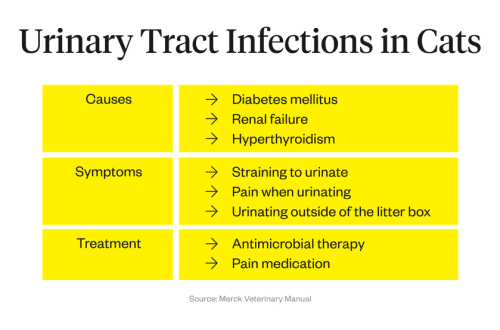
Epilepsy in cats: symptoms and treatment

Contents
What is epilepsy?
This disease is diagnosed in only 1-3% of cats. By this word, we must understand the disruption of the nervous system, which is characterized by the sudden onset of convulsive seizures. This disease will have a chronic course, and the owner fixes attacks on a permanent or periodic basis.
The disease affects cats of any sex and manifests itself at any age. It is noted that it occurs more often in males. There is also an opinion that epilepsy can be inherited genetically, but there is no official data that testified to this. For example, kittens born to a mother with epilepsy may not inherit the condition.

Causes of epilepsy in cats
Epilepsy in cats comes in two forms. Each of them has its own characteristics and causes of occurrence, as well as differences in the time of manifestation of the first symptoms of the disease.
In veterinary medicine, two main forms of epilepsy are distinguished: congenital (true, structural) and acquired (symptomatic, reactive). Also, when it is not possible to establish the causes, idiopathic epilepsy is isolated.
Congenital causes
As a rule, they occur even before the birth of a pet and are associated with a violation of the development of the brain, namely, the processes of inhibition and excitation. With this type of epilepsy, changes in the work of other organs and systems will not be recorded.
The most likely reasons are:
Congenital genetic anomalies of the brain, inbreeding (note that the first offspring is the most vulnerable);
Intoxication and infections during the pregnancy of a cat;
Birth injuries of newborns;
Heredity (breeding animals with defective genes).

Acquired Causes
Can affect the occurrence of epilepsy at any age of the pet. These reasons usually include:
Benign and malignant brain tumors;
Traumatic brain injury;
Endocrine pathologies;
Prolonged fasting (in violation of feeding);
Bacterial and viral infections. Most often, such as: infectious peritonitis, canine distemper, feline leukemia, rabies, bacterial meningitis;
Lack of minerals Mg, Ca and vitamins D, B2, B6, B12, which are so necessary for the normal functioning of the nervous system;
Helminthiases;
stress factors.

Symptoms of epilepsy in cats
Seizures can also be called a seizure or confusion. In a cat, the physical manifestation of a seizure can be expressed in different ways: from looking into the distance or twitching one part of the muzzle to falling on its side, vocalization (barking, howling), gnashing of teeth, involuntary urination and defecation, jerking of the limbs.
Seizures usually come on suddenly and end spontaneously, and may last a few seconds or a few minutes. Epilepsy occurs in all animals, both purebred and outbred.
An attack or seizure in cats consists of three stages:
Aura. We may notice changes in a pet’s behavior before an impending seizure, such as restlessness. He is frightened of everything in a row or does not react to light, noise. Trembling, salivation appears, the animal tries to find shelter, tilts its head to the side, muscles twitch. These signs can last from a few seconds to several days and sometimes even go unnoticed by the owner.
Ictus – the ictal stage, the phase of convulsions. During the ictus there is a spasm. The attack lasts from a few seconds to several minutes. Your pet may fall on its side and look like it is kicking or paddling. At this stage, muscle contraction occurs, as a result of which the pet twitches its paws, and the twitching may not be all four paws, but only one. You may observe involuntary urination, as the connection between the brain and the bladder is temporarily lost, and you can also notice the release of foam from the mouth, loss of consciousness. The heartbeat will increase. Breathing becomes more intermittent, frequent, it is very well audible.
postictal stage – recovery. It occurs immediately after a seizure. Your cat will appear confused and disoriented. She may wander or walk, but consciousness will gradually return to her. It is noted that some pets during this period pounce on water and food. This stage usually lasts up to 5 minutes.
The duration of all three stages usually takes from 3 to 7 minutes, but do not forget that all animals are different, and the attack time can be increased or decreased. The owner may not notice a clear transition from one stage to another, and will not be able to predict when the next attack will occur. It must be understood that the more often a pet has seizures, the worse it is for the body, since each attack causes oxygen starvation of cells.
When you observe continuously recurring seizures in your pet, in which the animal does not regain consciousness, in this case you can talk about status epilepticus. This condition is very dangerous because irreversible brain damage occurs, which in turn leads to death. Therefore, any violation of the behavior of the pet requires a mandatory visit to the veterinary clinic.

Diagnostics
It is impossible for the owner to independently diagnose epilepsy, referring to the presence of seizures in a pet, without visiting a veterinary specialist and conducting the necessary diagnostics. At the appointment, the doctor may ask you about the seizures themselves: when the first seizures appeared, how often they occur, how long they last, whether they depend on feeding, the nature of each attack (whether they are the same or there are differences).
Provide the veterinarian with a video of the attack, this will help him understand the situation better.
Also, at the reception, your cat will be examined:
Computed tomography and magnetic resonance imaging (used as the gold standard for diagnosing the nervous system);
General blood test (CBC). This analysis is used to confirm or exclude inflammatory reactions in the body, anemia;
A biochemical blood test (BAC) is used to determine or exclude abnormalities in the functioning of the kidneys, liver (for example, renal and hepatic encephalopathy) and other organs. Additional diagnostic methods may also be required – a study on bile acids, thyroid hormones and others;
Measurement of blood pressure;
Study of infections: rabies virus, feline coronavirus infection (infectious peritonitis), leukemia and immunodeficiency virus, toxoplasmosis, cryptococcosis, blastomycosis, dirofilariasis and others;
Ultrasound diagnostics of the abdominal cavity, heart;
X-ray diagnostics;
Electroencephalogram (EEG) (there is a registration of foci of activity in the brain);
They also conduct a study of cerebrospinal fluid (CSF).

These methods are carried out in order to identify deviations in the work of organs and systems that can cause seizures. If no abnormalities were found during the diagnosis, the doctor makes a diagnosis of idiopathic epilepsy.
First aid
If your pet has been diagnosed with epilepsy, you should not panic, you need to calm down and, first of all, understand how you will behave during seizures, prescribe a certain action plan in your head, since rash manipulations can only harm both the owner and the pet. Next, we will figure out in detail what to do when a cat has an epileptic attack.
If you notice that a cat with epilepsy begins to have an attack, try moving the animal to a safer place (remove it from the window, find a place without foreign objects and sharp corners, in order to prevent injury). You can lay your pet on its side in a soft place, spreading a blanket or bedding, and also open a window so that the room is well ventilated.
Hold your head with your hand. Pay attention to the release of saliva from the mouth, it may be mixed with blood. Do not panic, perhaps there was damage to the mucous membrane of the lips, cheeks or tongue.
You can not put your fingers or foreign objects in the cat’s mouth, pull out the tongue, press the pet to the floor with force, try to drink or give medications.
Perform a video recording of the attack from its beginning to end in order to provide material to your doctor.
At the end of the attack, you need to provide the animal with rest.

When do you need to urgently contact the veterinarian?
The presence of an intractable epileptic seizure or episodes of frequently recurring seizures (status epilepticus) require immediate contact with a veterinary clinic in order to provide emergency assistance. When the attack manifests itself for the first time or episodes are rare, this also requires a planned non-emergency appointment with a veterinary neurologist.
Treatment of epilepsy in cats
Epilepsy for many owners sounds like a sentence that puts an end to the life of a pet. But do not rush to conclusions, because in our time there are many methods of dealing with this disease. In this part of the article, I will discuss how epilepsy in cats is treated.
The key is to eliminate the root cause. Only after a comprehensive examination and a final diagnosis, we can talk about prognosis and possible treatment options.
It is impossible to carry out and cancel the treatment of epilepsy on your own!
The appointment of anticonvulsants is used – anticonvulsants, which are prescribed exclusively by a veterinary specialist.
In the case of intractable, often recurring seizures – status epilepticus – it is recommended to hospitalize and put the patient into medical sleep with the simultaneous appointment of anticonvulsant drugs.
It is necessary to constantly monitor the attending physician to adjust the treatment – increase or decrease the dose of drugs, add new ones.

Prevention
There are no methods for preventing this disease, but individuals with epilepsy should not be allowed to breed.
The prevention of seizures is that the owner is not allowed to cancel or adjust the treatment on his own (a constant visit to the veterinary clinic is necessary). Also, do not forget to carry out planned preventive treatments against internal and external parasites, vaccinations against infectious diseases.
How long do cats with epilepsy live?
The life expectancy of your pet will depend on the timely diagnosis, as well as on the causes of epileptic seizures. The quality of cat care will affect life expectancy, so the owner should provide his pet with the right and timely treatment, regular visits to the veterinary clinic.

Summary
Epilepsy in cats is a rare disease that is accompanied by epileptic seizures and can be treated with timely access to a veterinarian. There are two types of epilepsy: congenital and acquired. To determine the variety, conduct diagnostics and make a diagnosis, you must contact a veterinarian.
Diagnosis of epilepsy is multi-stage, but for a correct diagnosis, the owner must be ready to go through it completely.
Symptoms of epilepsy in cats will depend on the stage of the attack. We will observe loss of consciousness, convulsions, twitching of one or all limbs, salivation, involuntary urination.
Treatment depends on the causes of the disease. It is based on the use of anticonvulsants, which are strictly forbidden to be used by the owner on their own. Therapy is prescribed only by a veterinary specialist – a neurologist after a comprehensive examination of your pet!
Prevention is based on preventing the breeding of animals with epilepsy. It is also possible to prevent seizures if you take a responsible approach to the treatment and maintenance of your pet.
To see clearly how an epileptic attack in cats goes, we recommend watching this video.
Answers to frequently asked questions





